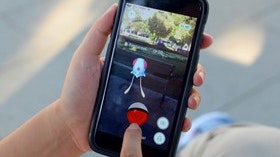Homepage
•
Learning Library
•
Blog
•
Create standards-aligned activities with Pokemon Go
Expand breadcrumbs
Expand breadcrumbs
- Learning Library
- Blog
- Create standards-aligned activities with Pokemon Go
- Homepage
- •
- Learning Library
- •
- Blog
- •
- Create standards-aligned activities with Pokemon Go
Create standards-aligned activities with Pokemon Go
By Kathy Schrock
August 3, 2016








